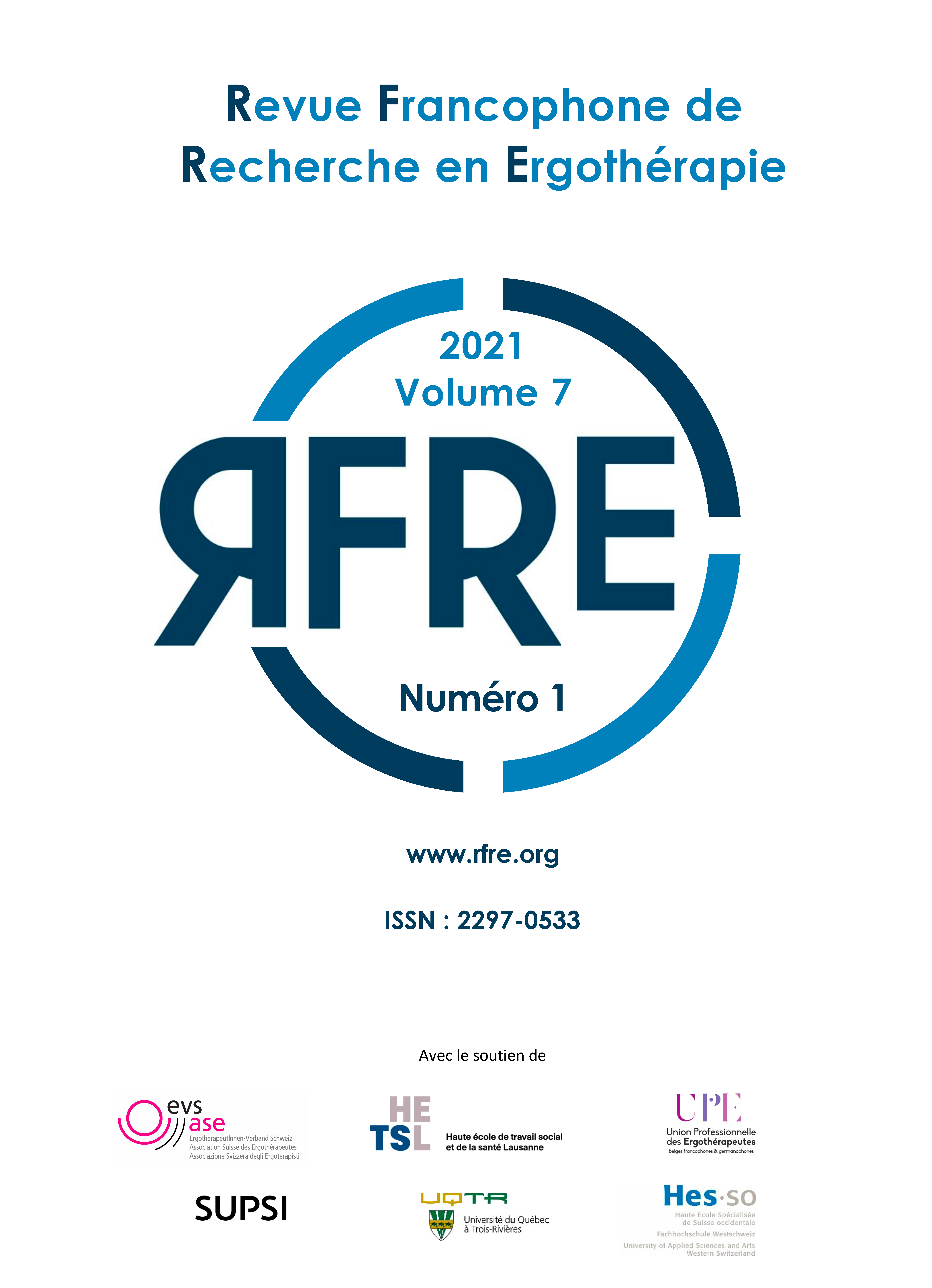Grasp patterns of Grade 2 and Grade 4 pupils and the effect of pencil grasp on speed and legibility in handwriting
DOI:
https://doi.org/10.13096/rfre.v7n1.177Keywords:
Assessment, Grips, Handwriting, Legibility, Occupational therapy, Paediatrics, Pencil grasp, Writing speedAbstract
Background: Handwriting is a functional skill essential for occupational performance that is taught early on to pupils. When a pupil has some difficulties with handwriting, teachers and occupational therapists tend to focus on changing his pencil grasp by favorizing the dynamic tripod one. Therefore, it has been proven that this grasp isn’t the only functional one.
Purpose: This study aims to describe grasp patterns of Grade 2 and Grade 4 pupils and evaluate the effect of pencil grasp on speed and legibility in handwriting.
Method: 57 pupils (Grade 2: n=22 ; Grade 4: n=42) were filmed during a series of handwritten memory tasks to identify the different grasps adopted by pupils. The handwriting skills were evaluated by completing a near-point copying task.
Findings: Pupils use different pencil grasps and none of the grasps described had an effect on speed and legibility of the handwriting. The dynamic quadrupod grasp is the most used by grade 2 and 4 pupils.
Implications: The dynamic tripod grasp is not the only functional grasp. The dynamic quadrupod, the lateral tripod and lateral quadrupod graps also allowed good speed and legibility when writing. When teaching handwriting, the different grasps should be taken into consideration.
Downloads
Published
How to Cite
Issue
Section
License
Copyright (c) 2021 Véronique Rochon, Mélissa Coallier, Mélissa Parent, Justine D'Amour, Pascale René, Cassandra Benoit, Camille Gauthier-Boudreault

This work is licensed under a Creative Commons Attribution-NonCommercial-ShareAlike 4.0 International License.












